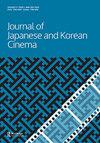Visualizing (im)mobility in post-reversion Okinawa: a comparative study of NDU’s Asia Is One (1973) and Chinen Seishin’s The Human Pavilion (1976)
引用次数: 0
Abstract
ABSTRACT This article compares two influential visual media works produced in post-reversion Okinawa: the film Asia Is One (1973), produced by Nihon Documentarist Union (NDU), and Chinen Seishin’s experimental play The Human Pavilion (1976). The performative deconstruction of Okinawan regional identity in these works reflects the emergence of (im)mobility as a critical concept for approaching Japanese ethnonational discourse and its mediated enactments during this period. Asia Is One employs a complex spatio-temporal mapping of Okinawa’s diverse historical networks of labour and cultural exchange to challenge visions of ambivalent synchronicity between Okinawa and the mainland advanced within the event of reversion. The Human Pavilion challenges structures of spectatorship developed in the 1975 Ocean Expo to demonstrate the limitations of visualizing ethnocultural particularity, gesturing to a pervasive and self-perpetuating silence integral to the production of ‘Okinawa’ as an ethnographic object. Reading these works in the context of post-reversion media ecologies offers a sense of the complex negotiation of Okinawan identity that developed in the Ocean Expo and the reversion, events that exposed and reproduced transhistorical legacies of (im)mobility in Okinawa.回归后冲绳的流动性视觉化:NDU的《亚洲是一体》(1973)与Chinen Seishin的《人的展馆》(1976)比较研究
摘要本文比较了日本纪录片联合会(NDU)出品的1973年电影《亚洲一体》(Asia Is One)和1976年中国的实验剧《人亭》(the Human Pavilion)这两部在回归后的冲绳制作的颇具影响力的视觉媒体作品。在这些作品中对冲绳地区身份的表演性解构反映了(im)流动性的出现,这是一个处理日本民族话语的关键概念,并在这一时期进行了调解。“亚洲一体”采用了冲绳多样的劳动力和文化交流历史网络的复杂时空映射,以挑战冲绳与大陆之间矛盾的同步性愿景,这种愿景是在回归事件中提出的。人类馆挑战了1975年海洋博览会上发展起来的观测者结构,以展示可视化民族文化特殊性的局限性,表明“冲绳”作为一个民族志对象的制作所不可或缺的普遍和自我延续的沉默。在回归后的媒体生态背景下阅读这些作品,可以感受到在海洋博览会和回归中发展起来的冲绳人身份的复杂协商,这些事件暴露和再现了冲绳流动的跨历史遗产。
本文章由计算机程序翻译,如有差异,请以英文原文为准。
求助全文
约1分钟内获得全文
求助全文
来源期刊

Journal of Japanese and Korean Cinema
Arts and Humanities-Visual Arts and Performing Arts
CiteScore
0.60
自引率
0.00%
发文量
16
期刊介绍:
Journal of Japanese and Korean Cinema is a fully refereed forum for the dissemination of scholarly work devoted to the cinemas of Japan and Korea and the interactions and relations between them. The increasingly transnational status of Japanese and Korean cinema underlines the need to deepen our understanding of this ever more globalized film-making region. Journal of Japanese and Korean Cinema is a peer-reviewed journal. The peer review process is double blind. Detailed Instructions for Authors can be found here.
 求助内容:
求助内容: 应助结果提醒方式:
应助结果提醒方式:


